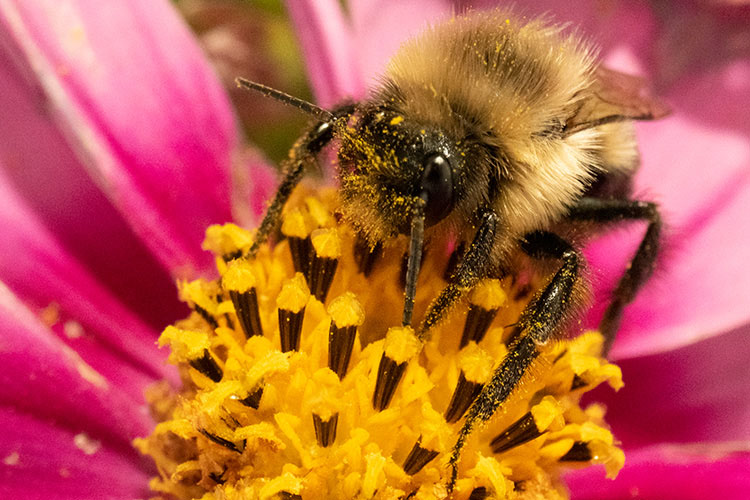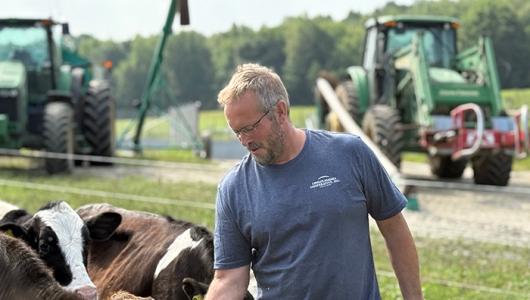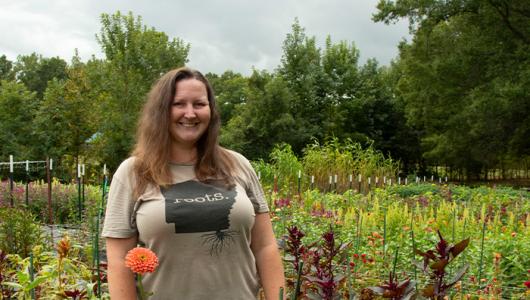A bee-less future would sting us all. The decline of bees and other pollinator populations threatens our global food security and here’s why.
Pollinators contribute to ecosystem health and a sustainable food supply. Honeybees, native bees, birds, bats, butterflies, and other animals are all required for more than 80% of the world’s flowering plants to reproduce. This includes food crops.
Who’s in a better position to benefit from safeguarding pollinators than agricultural producers, forest landowners and beekeepers?
Caring for pollinators also helps protect our ability to grow food and producers’ bottom lines while ensuring the marketability of other agricultural goods throughout the nation.

June 21 - 27 is National Pollinator Week, but it’s certainly going to take more than a week to show our gratitude to these priceless creatures.
No single issue can be blamed for the pollinator decline. But here are five tips you can include in your daily land management as part of the solution.
- Diversify and beautify your land: Offer your land as an oasis for pollinators by planting a diverse mix of flowering plants that sustain and enhance pollinators. This way, you can assist the production of healthy fruits and vegetables to improve your bottom line.
- Protect nesting sites: Protect flowering plants and potential pollinator nesting sites, such as areas of undisturbed ground and native vegetation.
- Carefully use chemicals: Pollinators can be sensitive to chemicals. So, try a natural, pollinator-friendly alternative on your land. Or when using pesticides, herbicides, or insecticides, please do so carefully.
- Support Bee Better Certified producers: Become a Bee Better Certified producer or buy produce from farms that support bees. Products that are Bee Better Certified are grown on farms that use pollinator-friendly conservation practices.
- Buzz on: Spread the word about these tips and the conservation programs available to help you and your neighbors implement pollinator-friendly practices on your land.
And before you take that third bite of food a pollinator has gifted you, see how the conservation resources offered by the U.S. Department of Agriculture (USDA) can help you implement those tips on your land.
USDA works closely with agricultural producers and forest landowners to help increase pollinator habitat in targeted areas.
USDA offers conservation programs that provide financial incentives and technical assistance to farmers and forest landowners through the Natural Resources Conservation Service (NRCS).
NRCS programs like the Environmental Quality Incentives Program (EQIP) help improve pollinator habitat and their food sources by assisting with planting cover crops, wildflowers, and native plants in buffers and areas not in production.
USDA’s Farm Service Agency (FSA) also helps producers enhance pollinator habitat on their land through the Conservation Reserve Program (CRP). Producers and forest landowners voluntarily convert highly erodible cropland or other environmentally sensitive land to permanent vegetative cover like perennial grasslands, which are full of native forbs and legumes that are critical to the health of honeybees and wild pollinators.
FSA also supports livestock, honeybee, and farm-raised fish producers with emergency assistance through its Emergency Assistance for Livestock, Honeybees, and Farm-raised Fish (ELAP) program. ELAP provides financial assistance to producers who are experiencing honeybee losses from their hives for honey production, pollination or honeybee breeding.
For more information about pollinators and what you can do to help, please contact your local USDA service center.
Jocelyn Benjamin is a Public Affairs Specialist with the FPAC Business Center


